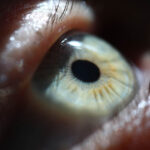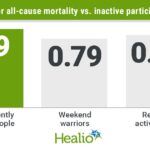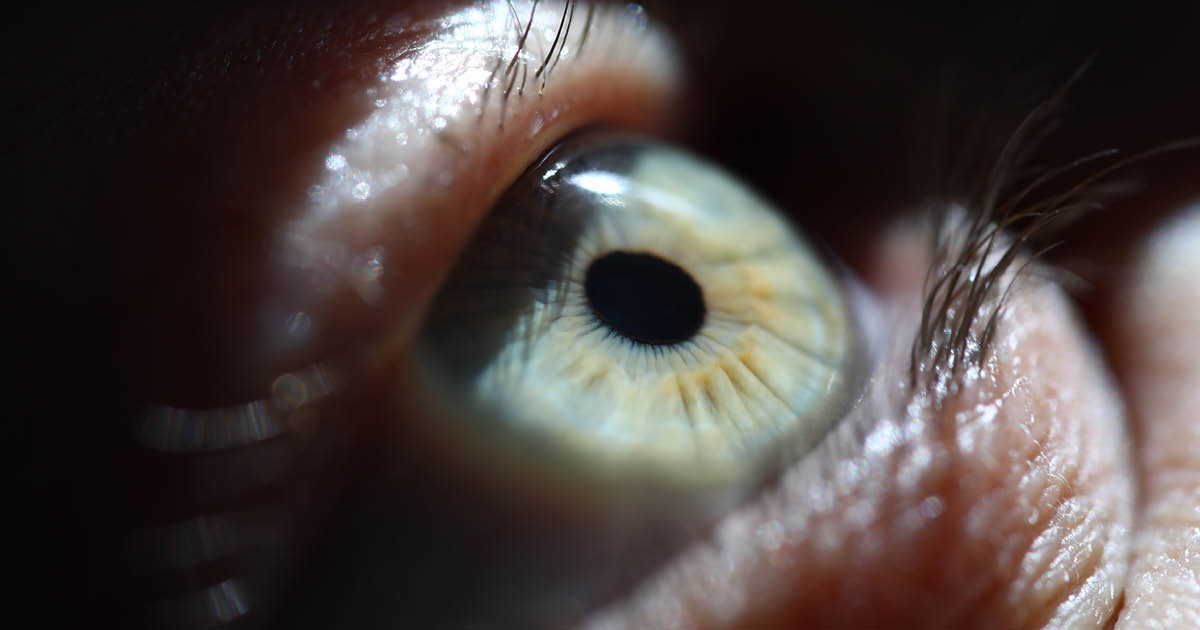August 06, 2025
6 min read
Welcome to another edition of CEDARS/ASPENS Debates. CEDARS/ASPENS is a society of cornea, cataract and refractive surgery specialists, here to discuss some of the latest hot topics in ophthalmology.

Kenneth A. Beckman
IOL technology has made giant steps over the past 2 decades, and we are now able to offer our cataract patients a wide range of premium options that can significantly reduce or eliminate the need for spectacles. Should spectacle independence be our aim with every cataract patient? What are the pros and cons, the opportunities, the barriers and the future perspectives? Dagny Zhu, MD, and Shachar Tauber, MD, will address these questions from different viewpoints.

Kenneth A. Beckman, MD, FACS
OSN CEDARS/ASPENS Debates Editor
Full range of vision IOLs should be the default option
The variety of lenses that we have nowadays makes it possible to achieve spectacle independence for more patients than ever before.
In my practice, every cataract patient is offered this opportunity, and I assume that this is what everyone wants and deserves. Of course, a complete eye exam is crucial to confirm candidacy for full range of vision IOLs, but whenever these conditions are met, there is no reason why we should not inform people that these options are out there. In fact, if we do not, we can be held liable. Patients come back angry saying that their neighbor got that special lens and why did we not offer them the same opportunity.
Some years ago, the default option was a monofocal lens, but with these new innovations, the default should become the full range of vision lens. The few patients who are not suitable candidates should still be informed that they exist and be given a detailed explanation of why they are not advisable in their specific situation.
The new non-diffractive extended depth of focus lenses now offer greater spectacle independence also for people who drive a lot at night. Previously, these would be monofocal patients because trifocal lenses caused halos and glare. A lot of my patients who are truck drivers and drive 8 or 10 hours per night are now enjoying a good range of vision without spectacles and photic phenomena. A study of mine with the Clareon Vivity IOL (Alcon) is about to be published, and it demonstrates that by aiming for just –0.25 D in the nondominant eye, 80% of these patients get J2 or better reading vision, and 50% get J1 or better.

Dagny Zhu
The Light Adjustable Lens (LAL, RxSight) is a suitable premium option even for people who have underlying eye conditions. It offers an increased range of vision especially if you adopt a mini-monovision approach. I have used these lenses in patients with epiretinal membranes, drusen or mild irregular astigmatism on the cornea. These were patients who previously could only be implanted with a monofocal lens and needed spectacles for reading or for any fine work up close. With the LAL, we are able to fine-tune and titrate their monovision, greatly enhancing their spectacle independence and range of vision.
A third new option is the pinhole IC-8 Apthera lens (Bausch + Lomb), which can be used in cases of aberrated corneas, in post-RK eyes and in eyes with keratoconus. The pinhole increases depth of focus, and with a mini-monovision approach, we can provide greater range of vision for these patients
For some people, the cost of these premium lenses might be a limitation, but we can go a little beyond a standard monofocal option, offering an enhanced monofocal IOL. I would never promise these patients that they are going to have increased spectacle independence. I tell them that they would need to use spectacles for reading and computer vision, but the enhanced monofocal technology with just –0.5 D to 0.1 D of mini-monovision aim will likely allow many of them to read the computer and even text messages on their phone. When you underpromise and overdeliver, you have the happiest patients. They are delighted when they realize they can read more than expected. They do not have to pay any extra for an enhanced monofocal lens, but the fact that they can have a greater range of vision brings great word of mouth to your practice and elevates your reputation as a surgeon.
The goals we can achieve now in all these cases were thought to be impossible just a few years ago. So, we should keep an open mind as surgeons and talk to our patients because even those who do not have perfect eyes can now in many cases be offered the advantages of at least some level of spectacle independence.
For more information
Dagny Zhu, MD, of NVISION Eye Centers in Rowland Heights, California, can be reached at dagny.zhu@nvisioncenters.com.
Do not force an unwanted solution upon patients
The lenses we have now are a wonderful opportunity for many of our patients, and the continued progress we are making in this field can only make us proud and happy.
When I started in ophthalmology, the lenses did not fold and required big incisions and sutures. What we have seen since then is a true revolution, and we are continuing along that path. However, I do not think that advanced IOLs for spectacle-free vision are a suitable option for everyone. There are still eye conditions, socioeconomic factors and even personal preferences that make quite a few patients better candidates for monofocal IOLs.
I work at a large Catholic hospital in Missouri, and our socioeconomic context is different from a private practice in Southern California. But this would only marginally affect the discussion, which should be mainly scientific and practical.
In the United States in the last few years, just under $40 billion was spent on glasses and frames, and if we add contact lenses, that is another $10 billion. We have celebrities such as Tina Fey and Jeff Goldblum who are constantly seen with glasses. We also had a unique person, Iris Apfel, who was well known for her very large glasses. She passed away in 2024 at the age of 102 but was up to the end of her life a style icon, signing a major contract with one of the world’s most prominent modeling agencies at the age of 97.
It is not uncommon for patients to wish to continue wearing their spectacles after cataract surgery because they are used to them and because stylish frames can add a youthful touch to their face, hiding the signs of age. I would never be able to talk Tina Fey out of her glasses, and if Iris Apfel were still alive, she would cane me for such a discussion. Glasses can be fashionable as well as comfortable, and they have no contraindications or side effects.
From the standpoint of science, pursuing the goal of spectacle-free vision is a major push for progress, research and innovation. Since the time when lenses did not fold, we have progressed to lenses that go through microincisions, correct astigmatism, and provide multifocality and extended depth of focus. We can implant a pinhole lens in patients with compromised vision quality due to corneal scars and high aberrations. We have the Light Adjustable Lens (RxSight), which allows us to fine-tune vision postoperatively, and we can continue offering spectacle independence to patients who previously had refractive surgery. However, we know that science still depends on measurements, whether it be axial length, keratometry or aberrometry. Measurement systems and formulas continue to improve, but we are still not 100% accurate to within less than 0.5 D of target. We can use monovision, and I am myself a monovision contact lens wearer after LASIK.

Shachar Tauber
As I tell my patients, I underwent refractive surgery in 1999, and now that I am 62 years old, I “falsify” my LASIK by putting a contact lens in one eye. I like to be spectacle independent, but I am also an avid race car driver, and to see in monovision at high speed is not a good idea, so indeed, I have my driving glasses to put on. Would I be able to do that with the Light Adjustable Lens set for monovision and not wear driving glasses? I would not. Would I be able to do that with multifocality? In principle, yes, but after LASIK, perhaps not. We have other issues: There are patients with dry eye disease, and there are now medications and other treatment options for the lids and ocular surface. But we have to make sure we do not bring patients into a concept of “no more glasses” when we are not properly addressing that component, taking into account that dry eye disease often persists despite treatment. In addition, patients who have anterior basement membrane dystrophy that at times is difficult to diagnose or instability of the zonules, such as those with pseudoexfoliation or ocular trauma, might suffer from decentration of these lenses, leading to significant problems. Last but not least, in patients with ocular pathologies such as macular degeneration, epiretinal membranes and glaucoma, which are frequent in our cataract surgery population, those advanced-technology IOLs would reduce contrast sensitivity and potentially cause photic phenomena, leading to further vision impairment.
Other patients I would like to include are those who are potentially candidates for a Light Adjustable Lens but cannot afford the time it takes to attend the multiple adjustment sessions because they live far away from the few centers that offer that kind of implant.
At our hospital, we introduced the concept that everyone should have cataract surgery done with the femtosecond laser. It is our standard, and we do not charge for it. This is because we believe that the most important part of cataract surgery is to safely remove the cataract and produce a space in the eye where the lens can be implanted consistently and reproducibly. But until we have a lens that does everything we want and is accessible to everyone, in terms of both eligibility and cost, the best we can do is talk with our patients, understand their condition, needs and desires, and not force upon them a solution that they do not need or may not benefit from.
For more information:
Shachar Tauber, MD, of Mercy Eye Specialists in Springfield, Missouri, can be reached at pilota1@me.com.










